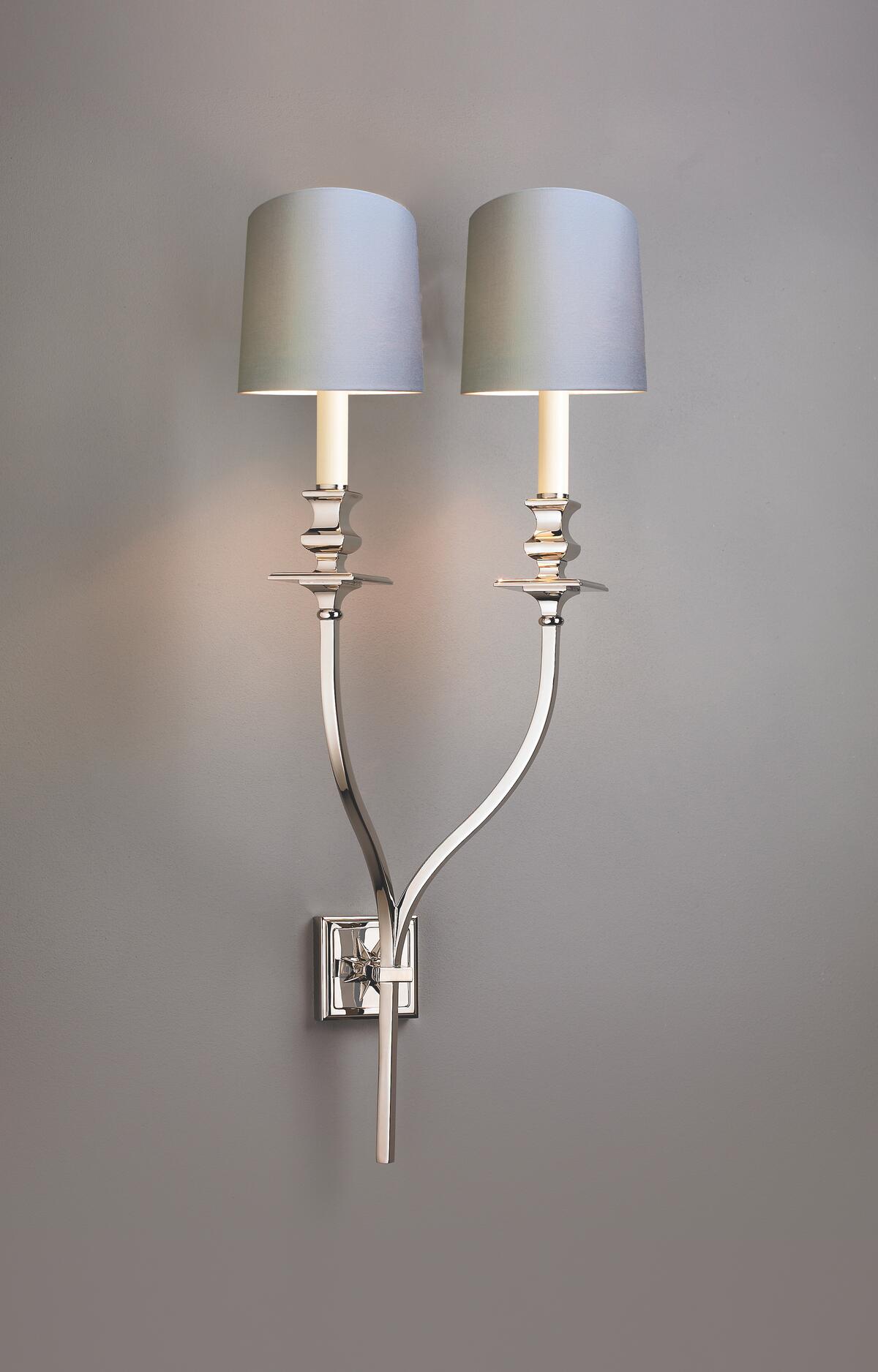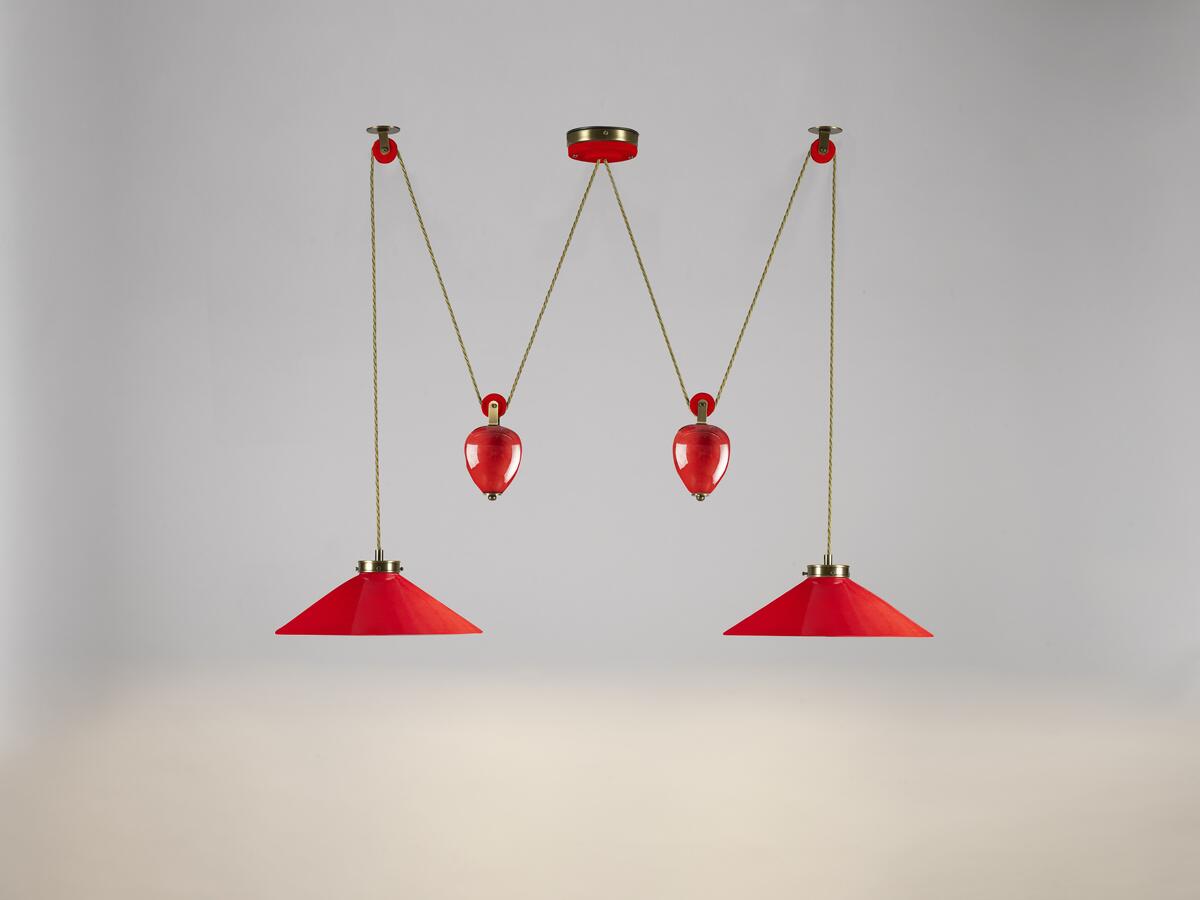Hector and Emma Finch are true design pioneers. From his beginnings in the 1980s as an antiques dealer in Lancashire, England, salvaging estate sale and auction finds; to a storefront stint in London, importing pieces from far-flung locales to Kensington townhouses and Mayfair restaurants of the 1990s; to her entry into the business and a gradual shift to original designs around the turn of the millennium, the husband-and-wife team have built their brand one day at a time, confident in the belief that classic, quality European craftsmanship will never go out of style. Not only has history proven them right, it has passed the proverbial torch: For the past decade, Sir John Soane’s Museum London, a Regency-era repository of the famed British architect’s collection of statuary and more, has entrusted the company to reinterpret its lanterns as contemporary fixtures.

Though an established artisanal lighting brand in England—with a showroom at Design Centre Chelsea Harbour and manufacturing facilities at its headquarters in rural Herefordshire—Hector Finch is still something of a designer’s secret in the United States. But its reputation grows with each American customer who experiences the brand’s quality materials and timeless styles. Its new Neo Classical collection, a continuation of its commitment to traditional manufacturing techniques and materials, will only strengthen its market positioning. The wider portfolio includes elegant, articulated task lights alongside retro-inspired pieces such as a Sputnik chandelier, whilst also featuring a temple light banded with a classical Greek key motif and a simple, Adnet-influenced candle sconce with a beveled mirror backplate.
“Our aesthetic is rooted in classic European design dating from the early 19th century,” says Emma, whose primary role in the partnership entails managing the business. Hector, who has decades of experience buying and restoring antique light fittings, has literally held the history of English lighting in the palm of his hand. “The proportions and delicacy of our designs reflect that legacy,” he says. “We’re based in the Midlands, not far from Birmingham, which is historically called the ‘metal bashing’ center of this country. Metalworking harks back centuries here, and this area, known as the Black Country, was at the heart of the industrial revolution.”
The techniques the company employs have been used for generations, but now they’re combined with CNC lathes and other modern technology. “It’s this blend of modern and historical that makes us unique,” says Emma. That and the fact that the company produces most of its light fittings to order from raw brass and zinc only, materials that imbue its pieces with quality and integrity that can be hard to find in products produced in the Far East.

The same integrity characterizes Hector Finch’s European suppliers, who are small, family-run companies with generational expertise in ceramic and glass craftsmanship. “All the colored glass we use comes from Murano, Italy, where they’ve been manufacturing glass for millennia,” says Hector. The company’s commitment to venerable techniques benefits not only their products but the artisans behind them, keeping their skill sets relevant in an increasingly automated and artificially intelligent world. Following the recession of 2008, the brand’s orders for the hand-thrown shades and accompanying components of its Lucia line helped sustain the factory in southern Italy where the ceramic parts are cast. “We’re supporting a tradition of knowledge and skills that, without the interiors industry, would have disappeared,” says Emma.
This attunement to history may help explain why Hector Finch is not especially interested in trends. “We very much plough our own furrow,” says Hector. The brand’s pieces fit right into eclectic English country homes filled with mix-and-match antiques and inherited artworks, but they’re equally at home in more contemporary American interiors—the fixtures’ pared-down essence and intentionally soft, natural finishes bringing a casual gravitas to even blank-slate new builds. “They’re not fussy,” says Hector. “They provide contrast to a modern or minimalist backdrop.”
Emma has observed that Americans tend to describe Hector Finch’s style as “transitional”—a term she finds to be true. Traditional but not uber-trendy, it’s an aesthetic that has been embraced by such showrooms as R Hughes in Atlanta, where the brand has exceeded expectations—a testament to Hector Finch’s stateside fan base and the fact that its pieces can slot into any setting. Following a visit to Harbinger New York this month, the duo can expect a similarly enthusiastic reception in South Florida in February for the opening of Benjamin Peterson’s new showroom in Palm Beach.

With more than three decades of business under their belts, Hector and Emma have found the delicate balance between maintaining their company’s independence while continuing to expand. To get there, they didn’t follow any particular map—Hector refers to their strategy as “getting up every morning and fighting the fight.” Instead, they steadily built their portfolio of original styles while financing the company through Hector’s antiques sales until the design side of the business could hold its own. “In terms of our American presence, we started off with one showroom in New York in the early noughties, when the collection was 15 designs at most,” says Emma. She recalls knocking on doors in Los Angeles in search of representation, a sample lamp on her back.
“I trotted up and down La Cienega and Beverly Boulevard and went to the Pacific Design Center. That’s how we met Joe [Lucas, founder of Harbinger]. So we’ve done the hard graft,” she says. A perfect example of the endurance of Hector Finch’s style, that solitary light, the Starback, not only remains in the portfolio all these years later, but has since birthed a family, now existing in several different sizes and variations. The original dates back to Hector’s time as an antiques dealer.
“Sorting through different items every day for years, you start to notice when something special comes along,” he says. Chancing upon a pair of wall lamps among the miscellaneous offerings a friend had brought over from Spain, he immediately bought them—and set them aside. “It was one of those moments as a dealer when you realize, ‘Gosh, it’s fantastic; I’m not selling that.’” Keeping the best pieces and treating them as templates at first, he eventually began to tinker with the original designs. “You think, ‘Hang on a minute, I could improve on this.’ So you make it thicker, shorter, whatever amendments you have in mind.” Before long, he was designing pieces from scratch.
“The Zeppelin, one of our most successful products of recent years, is a totally original design,” says Emma. The tubular bathroom light features curved ends finished with small buttons, contrary to more commonplace and cliched big metal caps. “The objective was to eliminate the typical art deco–style heavy metal caps by rounding the fluted pillar of glass over the ends instead,” explains Hector. He achieved the effect by working with borosilicate glass, which requires a different manufacturing technique: Rather than being blown into a mold, glass in tubes is heated by blowtorch and manipulated into shape. “The ends give the lamp more of a timeless look instead of obviously referencing the 1930s,” he says.

In the brand’s Paola pendant, the sheer beauty and saturated color of Murano glass shines through. A globe with interior rib detailing, the style is produced in three sizes and as multisphered clusters. Its transparent hues include deep Blu Avio, bright Turchese, rosy Viola, rich brown Marrone and gray-greenish Grigio. “They’re all made in a master glassblower’s factory on the Island of Murano, and we match them with our bespoke metalwork, finished to the customer’s specification,” says Emma. By using transparent color, the decorative contrasts with the utilitarian, creating an ambiance that makes the style popular for dining rooms. Smaller Paola pendants are often specified as wall lights in powder rooms because of their flattering jewel tones.
For kitchens, Lucia—the ceramic series that helped save the aforementioned Italian factory—offers an updated version of a classic 19th century rise-and-fall fitting. It pairs a broad shade with a matching ceiling rose and an egg-shaped counterweight suspended by a pulley. From Rosso red and Arancio orange to Acqua blue, Rosa Rosa pink, Verde Salvia green and more, designers have a bevy of cheerful hues to complement their project’s palette. “We are quite keen on a bit of color, be it in Murano glass or these ceramic shades,” says Hector.

A fondness for vibrant colors is one distinguishing feature of the brand, but its esteem for traditional craftsmanship is perhaps most on display in its partnership with Sir John Soane’s Museum—an institution that’s held in high regard by classical architects for both its landmark building and the collection it contains. The collaboration began 10 years ago, when Hector Finch produced an interpretation of a gas lantern from inside the museum as the first item in its licensed line. “We’ve since sold a lot of them, and the museum gets a 10 percent royalty on every sale, which is meaningful to a little cultural institution on this side of the pond,” says Emma.
The continuation of the partnership for a decade and counting is more evidence of Hector Finch’s impeccable integrity. For the brand’s new, neoclassically influenced collection, the Lincoln lantern is an adaptation of a different piece, one that hangs outside the museum. The original is notable for the anthemion scrolls on its corners—a detail Hector kept but streamlined. “As ever, we tend to simplify rather than embellish,” he says. To research his rework, he spent many hours at the small, somewhat cramped museum, which is packed to the gills with Greek and Roman architectural fragments and statuary, busts and masks. “A rather extraordinary environment—you just try to soak it all in.” The outcome is both instinctual and informed by the past. Like all of Hector Finch’s designs, it becomes its own piece of history—one that people want to live with today.

This story is a paid promotion and was created in partnership with Hector Finch.
Homepage image: Paola and Chiara pendants are handblown from Murano glass | Courtesy of Hector Finch





























